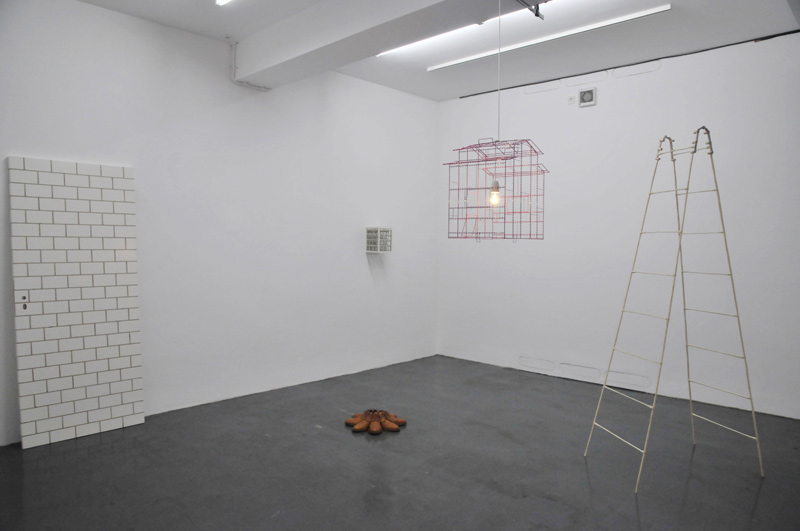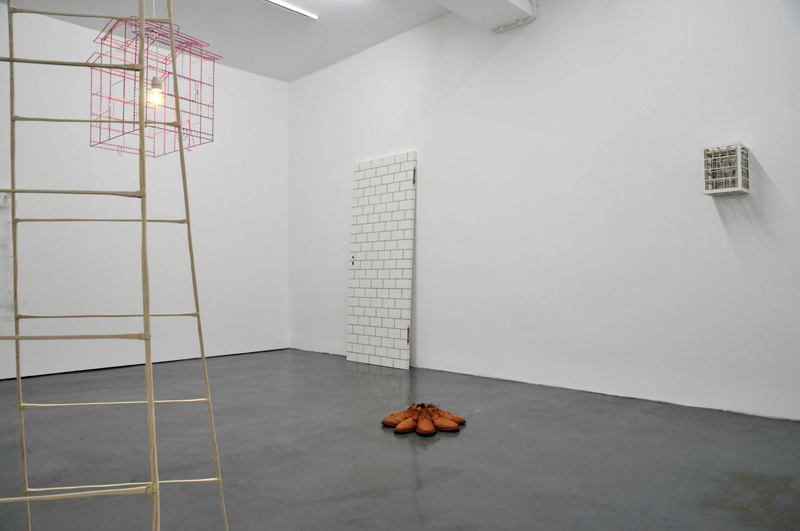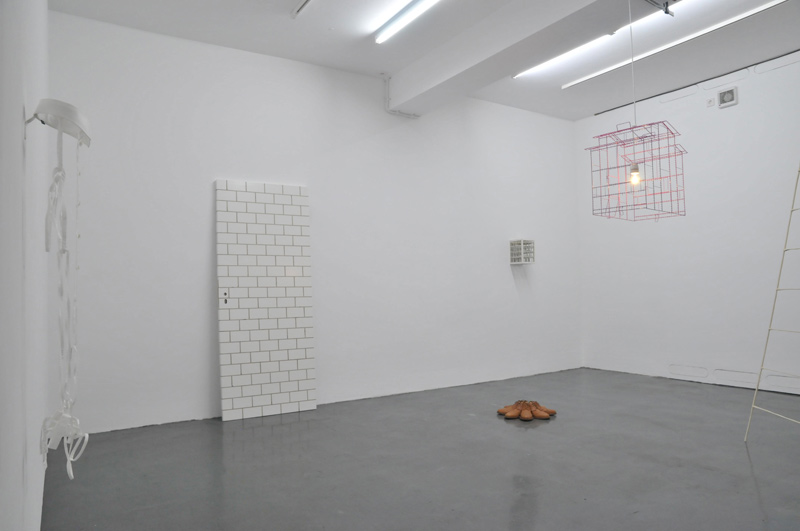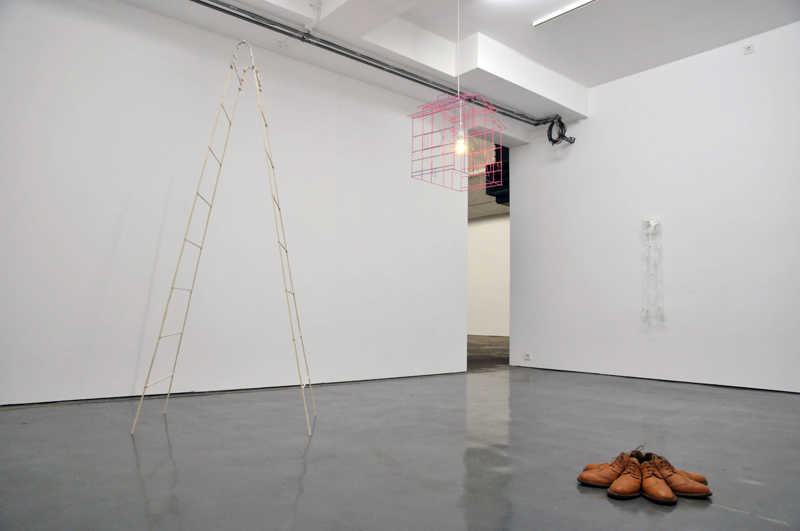Axel Lieber
September 10 – October 29, 2011
The sculptor Axel Lieber creates his sculptures using materials and forms drawn from everyday life, particularly from domestic surroundings. He either reconstructs these objects in altered forms or intervenes in such a targeted way that they are sometimes barely recognizable. Axel Lieber uncovers in the familiar something other, mysterious, alien, uncanny, resistant, dreamlike, abysmal, contradictory, fictional. A shirt, shoes, a ladder, a door, or a plastic garden chair appear in his Berlin exhibition “Geometry and the Everyday” in transformed shapes.
From a white men’s shirt, the artist cut away the fabric between the seams. What remained was a limp, skeleton-like form that, with its intact cuffs and collar, still recalls a shirt but has now become an independent sculptural entity. The sight of the hovering, disembodied fabric evokes a child’s fear of a ghost. The garden chair, too—sawed apart and reassembled in miniature with rivets—invites the child within us to kneel down, adopt a frog’s-eye view, and perceive the tiny chair as a pierced monster, like a participant in occult rituals.
From the multitude of objects in our world, Lieber selects those that have a personal bodily or memory-related connection to us. The sculptural challenge lies in transforming these familiar forms into new shapes that allow us, in wonder, to enter the open field of associations in our lives. In doing so, the artist successfully redefines the viewer’s relationship to the surrounding space and objects, allowing a different assessment of the forces and potentialities of life—a central function of sculpture.
Joseph Marioni is part of the New York Radical Painting movement and is regarded as its most prominent representative. Radical Painting is less a school of art than a discourse on the essence of painting itself: Can painting exist independently of all external references? Can painted color alone evoke such intensity that the viewer becomes absorbed in its mere configuration?
In the 1950s, American artists such as Barnett Newman, Mark Rothko, and Jackson Pollock had already demonstrated that this was possible. However, in the 1960s, two art movements emerged that rejected the expressive power of the autonomous image: Pop Art and Minimal Art. Their works once again relied on external references—media content in the case of Pop Art, or geometric grids in the case of Minimal Art.
In the early 1970s, Brice Marden and Joseph Marioni sought to redirect the focus back to the intrinsic value of painted color. Marioni published a manifesto titled Radical Painting—an attempt at a timeless debate and inquiry into the original and fundamental nature of painting.
Installation Views




